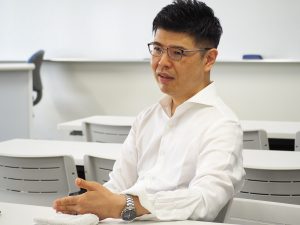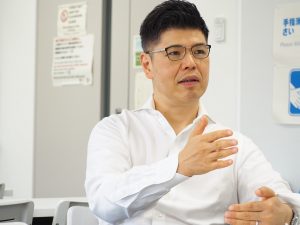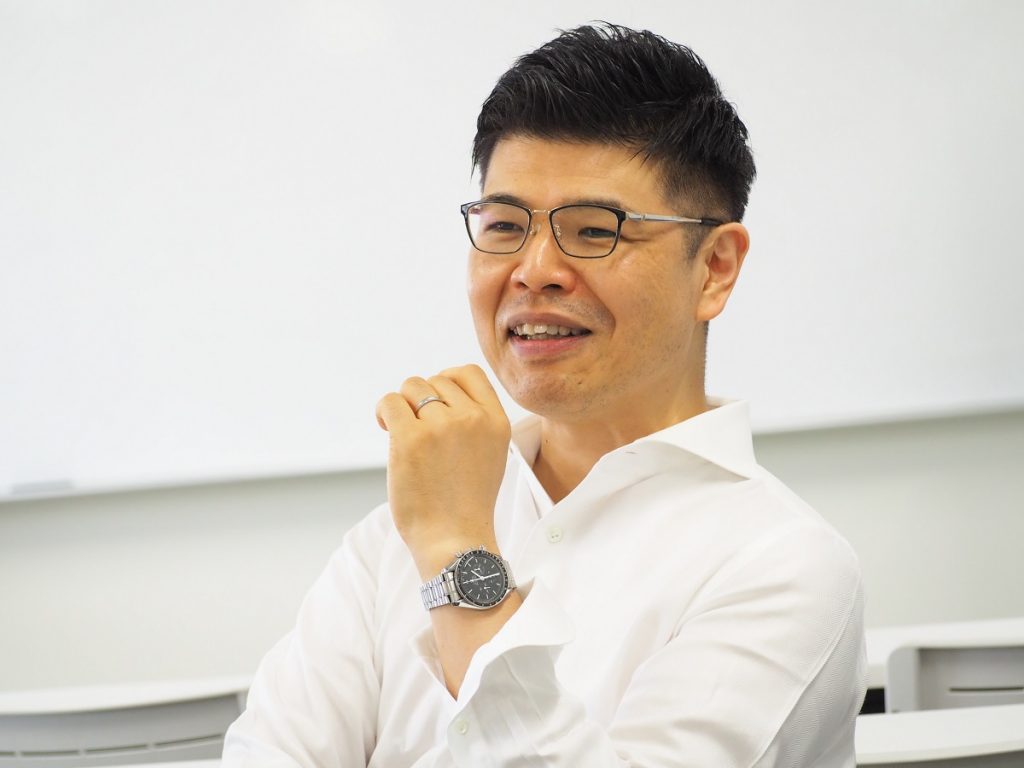From October this year, I will teach a course titled “Mathematics for Public Policy.” From 2019 to 2021, I taught courses including Financial Markets and Institutions and Macroeconomics for Public Policy.
In the wake of the COVID-19 pandemic, educational institutes throughout the world quickly rolled out online classes, and Tokyo U was no exception. I was teaching a class for first-year master’s students, and as some of the overseas students had never even stepped foot on campus, I encouraged more communication by using “Slack” which was not so prevalent at the time, placing importance on creating a sense of connection that would make students feel, “Right here, you are participating in a class at the Graduate School of Public Policy at the University of Tokyo.”
This was possibly one of the reasons why in 2021, I was given a President’s Commendation for Good Practices in Online/Hybrid Classes (an award for leading indicatives in online and hybrid classes).
The Mathematics for Public Policy course starting in October does not involve advanced mathematics but focuses on learning practical quantitative techniques that are actually useful for policy-making professionals.
 For 25 years, I practiced macroeconomics, including public policy, at institutions such as the Bank of Japan, the IMF, and the Basel Committee on Banking Supervision. During this period, most of my experience was in the field known as monetary policy.
For 25 years, I practiced macroeconomics, including public policy, at institutions such as the Bank of Japan, the IMF, and the Basel Committee on Banking Supervision. During this period, most of my experience was in the field known as monetary policy.
Monetary policy relates to the central bank’s control of interest rates and money for the purpose of stabilising inflation. In order to implement such policies, forecasting key economic indicators such as GDP and inflation rates is necessary to an extent.
For example, Shohei Ohtani throws a ball toward the catcher. There are 0.4 seconds left until the home base is reached. If you have taken a math course like mine, you have a good command of Newtonian mechanics, so if you know the initial speed and direction in which Ohtani throws the ball, you can predict the location and speed of the ball in 0.4 seconds’ time.
In the same way, using differential calculus (which is basically Newtonian mechanics), a policymaker can forecast – with reasonably minor errors – what the GDP or inflation rate will look like in a year’s time.
I am not saying that we can foretell on what day and time every rare disaster will take place. We all knew that any prior economic forecasts needed to be revised entirely after facing the COVID-19 pandemic or the war in Ukraine.
I am saying that foretelling the date and time you get infected by COVID-19 may not be the top priority for many of us. We are more interested in how to improve our immune system to make a resilient body. In the similar context of rare disasters, it can be more productive to focus on learning how to build a resilient house rather than foretelling the time and date when your house will be hit by a typhoon. This is this loss-minimization method that we are more focused on, and here too we find mathematics extremely helpful.
When I was a student 30 years ago, I never considered a profession related to mathematics; in fact I thought maths was a boring subject when I was exploring my career.
 However, one day an economics professor said quietly in class, “We now take the total derivative around the equilibrium of the IS-LM model” (an analytical method in macroeconomics) and began to use the linearisation method. This made me realise that even without knowing the entire detail of the economic model – in other words, the whole of the real world – it is possible to forecast what will happen when changing any policy variable. That’s when I thought to myself, “Without a doubt, maths is helpful.”
However, one day an economics professor said quietly in class, “We now take the total derivative around the equilibrium of the IS-LM model” (an analytical method in macroeconomics) and began to use the linearisation method. This made me realise that even without knowing the entire detail of the economic model – in other words, the whole of the real world – it is possible to forecast what will happen when changing any policy variable. That’s when I thought to myself, “Without a doubt, maths is helpful.”
I am not a mathematician, but simply a user of maths. In that sense, I’m in the same position as everybody else taking my classes. For this reason, I am able to discuss the use and universal applicability of mathematics in real-world practice.
Through this course, I hope everyone can find their own comfortable relationship with mathematics.



